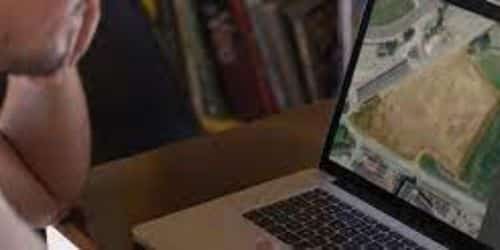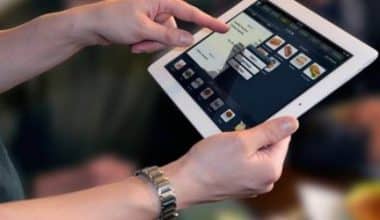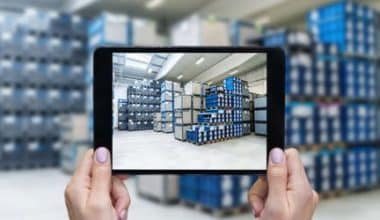Geofencing can help you re-engage past customers for repeat business and attract close-by new customers in order to expand your local business. Automation of time cards, location tracking for your fleet of vehicles, and monitoring of workers who are out in the field are all possible. In this post, we will go through the definition of a geofence, its dog collar tracker devices, how it operates in marketing and tracking, its warrant, and a few pointers for getting started right away.
Geofence
The process of setting up triggers to engage a target audience by sending pertinent information when they enter or leave a pre-defined area is known as geofencing. Depending on how the geofence is set up, GPS or radio frequency identification (RFID) technology may be used to trigger mobile push notifications, text or alert messages, targeted social media adverts, location-based marketing data delivery, vehicle fleet tracking, or technology disabling.
Geofencing is frequently used by businesses for marketing purposes. Additionally, they can utilize geofencing to keep an eye on activities in secure areas and notify management whenever someone enters or exits a given region. Companies frequently use geofencing to automate time cards, track business cars, and keep an eye on workers when they’re out in the field.
Types of Geofencing
Geofencing is the process of setting up virtual perimeters within specific areas, and it has practical implications for a variety of sectors. It’s a contemporary technology created to keep track of people’s activities and alert anyone who might need to know who is traveling where, when, and how to use GPS technologies to designate zones for different objectives. The advantages of such a system are numerous, but it’s worth looking more closely at some of their applications to get a better understanding of how your company might profit from the adoption of geofencing.
#1. Blast Zones
Regardless of the current downturn, Australia’s economy still heavily depends on the resources sector. Spend any amount of time around a sizable mining operation, and you’ll immediately notice and probably hear the dangers. A geofence can notify the appropriate persons when a blast is necessary to release iron ore for extraction, for example. It is evident that no one should be in the blast zone.
#2. Site and Yard
If your company requires employees to carry supplies or equipment from a home base, also referred to as a yard, to a temporary work location, setting up a geofence can help you simply track the times people enter and exit each region. A bulldozer returning to the yard to refuel before returning to the job site to unload its cargo is one example.
#3. Speed Zone
There are frequently zones in heavy industrial regions, such as mine sites, where you are not allowed to go faster than a specific speed limit. A speed restriction geofence can help you keep track of instances of speeding and, if necessary, send out warnings. Thanks to the customization capabilities of geofences, you may even establish different speeds throughout the day. Also, every time someone is reported for speeding, it is recorded in the events log so that managers or supervisors can review the past to identify repeat offenders.
#4. Confinement
While the aforementioned applications have all been focused on monitoring who enters a specific region, geofences can also be set up to keep those who are currently there inside. Confinement is the act of keeping someone within a specific region; it can be configured to notify you if the person departs the boundary. Geofences can assist in ensuring that everyone remains in the proper location for businesses with personnel who are based in a particular area, such as a taxi service.
#5. No Go Zone
This is a solution for regions you don’t want people to go to or enter, though not necessarily for safety concerns. It works similarly to blast and emergency geofences. Zones that must maintain security or that must safeguard the environment are suitable examples.
How Does a Geofence Work?
In order for a geofence to track a user’s location, location services must be enabled on the user’s mobile device. Geofences are defined within the code of mobile applications.
A virtual fence must be built around a predetermined place in software that is GPS- or RFID-enabled for geofencing to function. Whenever a mobile device enters or leaves the area, the geofence will then launch a previously configured response.
Geofence Marketing
Setting up virtual barriers around a location or area and keeping track of when someone using a mobile device breaches them is known as geofencing marketing. When this occurs, a notification is delivered to the person’s mobile device to promote a nearby business, product, service, or brand.
This crucial new method for more precisely identifying a company’s most likely clients is also known as geofencing advertising. Contrarily, geofencing enables advertisers to specify precise geographic restrictions for the distribution of their adverts. This enables them to target local residents who are more inclined to patronize a specific store due to factors like proximity, demography, brand affinity, and other factors. Instead of depending on extensive, highly random, and expensive mass advertising, this is much more cost-effective and effective.
How Geofence Marketing Works
This geofence can be made in three different ways. The first has a radius around the centroid. This entails determining the center point of a structure or piece of land and then figuring out how far each direction is from that point (i.e., the radius). This establishes a broad proximity zone that triggers the delivery of advertisements anytime a user of a mobile device is sufficiently close to a point of interest.
The second usually referred to as an isochrone, has a walk or driving duration. This entails figuring out how long it will take to go by all available means of transportation from one location to a specific destination. Then, a firm can only advertise to people who can go to their location within a certain period of time. This particular form of geofence enables marketing based on how simple it is for customers to go to a business rather than on how close they are.
The third involves the footprints of buildings. This approach represents the precise physical boundaries of a point of interest, be it a whole building, a park, or a single retail space in a mall, using measured polygons. Then a company can only notify people who have really entered the facility or are on the property. This specifically targets customers who, by entering a store, may be considering making a purchase.
Four Advantages of Geofence Marketing
We’ve already covered some of the distinctions between geofence-based advertising and conventional marketing. Let’s now delve deeper into the four benefits geofence marketing offers over things in an old-fashioned manner.
#1. Targeted Geofence Marketing
Geofence advertising has the added benefit of covering particular geographical regions. This enables marketers to place them where they anticipate their target clients to be. In contrast, mass marketing is used in vast geographic areas like cities, regions, or entire countries. Because of this, its ability to find prospective customers is significantly more erratic.
#2. Timely Geofence Marketing
Because they are provided practically instantly in reaction to a potential customer’s activities, geofencing advertising is frequently preferable to traditional ones. In order for your advertisement to be seen by potential customers, you as a business owner do not need to wait for them to read a newspaper or magazine, watch TV, or listen to the radio at a set time. You can start promoting them as soon as they enter your geofence.
#3. Flexible Geofence Marketing
Geofences are adaptive to your marketing plan because they may be made in a variety of ways. You can put them up to simply cover the grounds of your business or a specific area around it so that you only advertise to customers who are already inside.
#4. Affordable Geofence Marketing
Geofence marketing initiatives are economical since they can be set up in precise places. Because it requires several resources to spread a message over a large geographic area, mass advertising is costly. Additionally, it is predicated on the idea that exposure is always beneficial.
When using geofences for marketing, you only pay for ads in the exact locations you put up. They can also reach more potential customers if used properly.
Geofence Tracker
Depending on the application medium, geo-fencing warns the user with a pre-programmed prompt that may take the form of text messages, push notifications, or pop-up messages (browser or mobile application). A geofence tracker is one of a GPS tracking device’s most fundamental and crucial features as a result.
The following are some practical uses for the Geofencing feature:
#1. Fleet management Geofence Tracker
- First, geofencing helps large organizations manage and track their fleets. If your employee deviates from the recommended path, the vehicle will transmit an immediate alert.
- If such a circumstance occurs, you can remotely turn off the car to stop any unwelcome behavior that could hurt the driver or the car, which lowers the cost of carrying out the process.
- You can also evaluate employees based on how well they follow the company’s geofenced routes. The staff’s overall productivity is boosted as a result.
#2. Employee Tracking Geofence Tracker
- Employee tracking for businesses where fieldwork is required of the staff. It makes sure that each employee works the required number of hours at the allotted location.
- Ensuring that every employee is where they should enhance sales and profitability. A close check on them also cuts down on employees’ downtime and makes them aware of their own idle time.
- This geofencing feature allows the employees to record their attendance once they arrive at the designated location.
#3. Personal Vehicle Security Geofence Tracker
- The most typical place where geofencing is underutilized is here. A safe zone can be defined as your house, place of employment, school, etc.
- This function allows you to be quickly informed whenever your car enters or exits so you can respond appropriately.
- Your GPS gadget can shut engine power if the geofence boundaries are violated, protecting your automobile from theft or burglary.
#4. School Vehicle Tracking Geofence Tracker
- The school administration can locate the pupils’ transportation vehicles thanks to school car tracking. As a result, this ensures that any misconduct will be addressed and that students’ safety will not be compromised.
- Parents will be notified whenever their child’s car arrives or leaves the school’s grounds.
- Tracking daily entry and departure timings helps resolve timing concerns.
Geofence Warrant
A reverse warrant known as a “geofence warrant” is used when the government wants to find out who was in a certain physical region known as a “geofence” at a particular time. This “reverse warrant” is used to find suspects when there are no leads. A geofence warrant lets the authorities demand device data from companies like Google.
With the help of a geofence warrant, the government can now locate someone without a thorough investigation or significant expenditure of resources. The authorities can access what Google refers to as “Location History” data through geofence orders.
Using a variety of data sources, such as GPS data, Bluetooth beacons, mobile phone location data from surrounding cell towers, Internet Protocol address data, and the signal strength of neighboring WiFi networks, Location History keeps track of where a user’s device is at any given time. Geofence warrant lack both particularity and probable cause, making them generic warrants that are against the Fourth Amendment. It is essential to prove a Fourth Amendment search happened, the search broke the law, and the good faith exception does not apply in order to suppress evidence from a geofence warrant.
The Geofence Procedure Warrant in Stages
The geofence warrant can be issued in one, several, or a combination of three phases.
- Step One: The government initially looks for time-stamped location coordinates and anonymized numerical identifiers for every device that traveled through a certain area within a given window of time. With a geofence warrant, this data is gathered from a corporation, most frequently Google. Due to the ease with which individuals can be recognized from their Location History data and the ease with which the government can obtain subscriber information for anonymous IDs, the data provided to law enforcement in Step One is not completely anonymized.
- Step two: The government examines the list and eliminates names from it using additional investigation methods. The company occasionally receives demands from the authorities for further data regarding certain accounts. You can ask the business for more location history for a longer period of time and without geographic restrictions in a private letter.
- Step three: Using the original geofence warrant or another warrant, another court order, or a subpoena, the government further reduces the list and asks the corporation for identifying data (such as usernames, birth dates, and other identifying information of the phones’ owners).
Geofence Dog Collar
Below are a few lists of the best geofence dog collar to get for your dogs:
#1. Tractive Geofence Dog Collar
You may also take into account the Tractive GPS Tracker Collar with a virtual fence feature if you’re looking for a dog fence collar that perfectly fits into your budget. It is extremely accurate and has a battery life of up to seven days! You may create five GPS boundaries with the Tractive dog collar that can be marked as safe zones and no-go areas for your four-legged friend. One of the elements of this device’s restrictions is that fewer borders can be placed up here than with Halo and SpotOn.
#2. Halo Collar 2+ Geofence Dog Collar
Due to the fact that it makes use of training methods created by renowned canine behaviorist and trainer Cesar Millan, the Halo Collar 2+ is currently the best GPS dog fence. It is a clever four-in-one dog training system and GPS dog fence designed to encourage independence, security, and communication.
Your dog will be directed to stay behind wireless fences by Halo’s built-in navigation system, which uses cutting-edge GPS & GNSS technology on par with autonomous cars. The Halo Collar provides tailored feedback for your dog using Cesar Millan’s significant training experience. Along with keeping your dog healthy, happy, and safe, exercise training offers a feedback record with daily metrics on his walks, activity, and safety.
#3. SpotOn Geofence Dog Collar
The #1 GPS Dog Collar Fence that is now available on the market was quite simple to choose from. One of the most cutting-edge products on the market, the SpotOn dog collar has been put to the test by numerous dog owners. The cost is high (you can see the current pricing here), but it is well worth it.
Hence, if you have extra money to spend on a GPS dog fence, SpotOn Collar is always a good choice. It’s a high-end choice, so it should come as no surprise that dog owners like myself consider it to be the best GPS dog collar fence. They also offer respectable financing choices. You may create and maintain 20 SpotOn collar fences across 0.5 to 1,000 acres. Our most accurate GPS fence contains and tracks your pets using four satellite tracking systems and True LocationTM GPS technology.
#4. Pawious Dog GPS Geofence Collar
The following dog GPS fence on our list was just released, and we only used it for two weeks. While not able to compete with more premium brands like Halo and SpotOn, I can still say that it is a good alternative and deserving of a try. Compared to Halo and SpotOn, the Pawious GPS fence coverage range is substantially narrower (98 feet to 3280 feet) (33-1000 yards). Like other GPS dog fences, it is not recommended for use in tiny yards or inside; instead, farms or open fields are where it works best.
What is Geofencing Used for?
Geofencing sends mobile marketing actions when a user crosses a virtual geographic boundary.
What is an Example of Geofencing?
For instance, when clients pass by a coffee shop, push messages for special discounts may be sent. While customers are at their neighborhood mall, retail establishments can alert them to bargains.
Is Geofencing an Invasion of Privacy?
In fact, police enforcement now uses it on a very regular basis in an effort to identify probable suspects. Nonetheless, this is causing many consumer and citizen advocacy groups to express grave worries about privacy infringement.
Does Geofencing Really Work?
Businesses may engage with their clients and literally meet them where they are with the help of geofencing technology. By targeting your audience’s proximity and position, you can reach them when and where they’re most likely to buy.
What are the Disadvantages of Geofencing?
Geofencing may be disadvantageous for marketing because many users turn off location monitoring and mobile connectivity to save battery life.
Can I do Geofencing Myself?
To get started, download Geofencing by PlotProjects for Android or iOS and create a location-based notification in the Plot Dashboard.
How Do I Use Geofencing on my Phone?
Create a geofence:
- Requesting access to the user’s location is the first step.
- Register for updates to the geofence state and location permissions in step two.
- Build the geofence in step three.
- Manage modifications to the location rights.
Does Geofencing Track Your Location?
A location tracking technology called geofencing alerts users to both their current location and their closeness to a geofence. An area of interest is encircled virtually by a geofence that is defined by latitude, longitude, and radius.
Related Posts
- GEOFENCING: Meaning, Types & Benefit
- Sources Of Capital: Best Sources For Start-ups In 2023
- WHAT IS A WARRANT: How It Works and Difference.
- GPS FLEET TRACKING: Best Fleet Gps Tracking Systems 2023.
- 15+ Best Car GPS Trackers: Top Rated Trackers With & Without Fee






